
Pradakshina, also known as Parikrama, is the sacred act of walking clockwise around a deity, temple, or holy object. In Hindu tradition, this ritual is more than a physical movement- it is a symbolic journey that places God at the center of our lives. The Sanskrit roots of the word combine pra (forward), da (give), and dakshina (right side), signifying “moving forward while keeping the divine on our right,” the side considered auspicious in Indian culture.
This practice is not limited to temples alone. Devotees perform Pradakshina around the sacred fire (Agni) during weddings, around peepal and tulsi plants for health and blessings, and even around gurus and parents as a mark of respect. In scriptures like the Shiva Purana, Pradakshina is praised as a powerful act of devotion, aligning the devotee with cosmic order. Just as the planets revolve around the sun, circumambulating the sanctum, reflects the eternal truth that all life moves around the Divine.
Meaning and Etymology of Pradakshina
The word Pradakshina comes from Sanskrit, formed by pra (forward, in front) and dakshina (the right-hand side, or the south). Together, it literally means “moving forward while keeping to the right.” In Hindu tradition, the right side is regarded as auspicious, symbolizing dharma, purity, and the proper way of honouring the Divine.
This is why Pradakshina is always performed in a clockwise direction, ensuring that the deity or sacred centre is continuously kept on the devotee’s right. The very design of temples includes a circumambulatory path, guiding devotees to move around the sanctum in this way.
On a deeper level, Pradakshina reflects the truth that God is the centre of our existence. Just as planets revolve around the sun, devotees revolve around the sanctum, symbolizing that life, breath, and destiny all flow from the Divine. Every point of the circle remains equidistant from the centre, reminding us that all beings are equally close to God’s grace.
Scriptural References and Legends of Pradakshina
Core idea:
Classical sources describe pradakshina as clockwise circumambulation that keeps the sacred on one’s right (dakshina) a traditional mark of reverence across Hindu and Buddhist worship. Authoritative overviews note the devotee begins in the east and moves southward, following the sun’s course.
Vedic–Grihya lineage:
Domestic-rite manuals (Grihya Sutras) place Agni at the heart of household ceremonies. In vivah, rites are performed around the consecrated fire, with the couple proceeding in circuits/steps witnessed by Agni; the fire is then borne with the newlyweds. These texts preserve the praxis that later becomes the well-known saptapadi/phera around Agni.
Pauranic praise :
Later Puranic literature extols circumambulation as sin-effacing and merit-conferring; one frequently cited passage (Skanda Purana) states that successive steps of pradakshina diminish mental, verbal, and bodily sins.
Ganesha–Karttikeya legend:
A widely told Puranic tale recounts a wisdom contest where Karttikeya circles the world while Ganesha reverently circles his parents Shiva–Parvati, declaring “my parents are my world.” The story is often invoked to teach that honouring the source is the highest pradakshina.
Temple etiquette & Shaiva nuance: Temple practice encodes the “right-side” principle in layout and movement. In many Shaiva shrines, devotees traditionally avoid crossing the gomukhi (abhisheka outflow), performing a three-quarter circumambulation and turning back- an etiquette traced in contemporary Shaiva practice guides.
Pan-Indic spread: The rite is shared across South Asian religions- circumambulating murtis, stupas, Chaityas, and Jina images, underscoring its antiquity and breadth.
From the Vedic household fire to Puranic praise and living temple norms, scriptures and legends converge on one theme- move with the cosmic order, keep the sacred to your right, and let each mindful step draw you into the deity’s orbit.
Symbolism of Circumambulation (Pradakshina)
Pradakshina is more than walking around a temple- it is a sacred act filled with deep symbolism that reflects both cosmic truths and inner devotion.
God as the Centre of Life
When a devotee moves around a sanctum, it is a reminder that just as the deity occupies the centre of the temple, so too should God remain the centre of one’s life. Every action, thought, and breath is meant to orbit around the Divine source.
The Circle of Equality
In a circle, every point on the circumference is equidistant from the centre. Similarly, Pradakshina signifies that all beings are equally close to God’s grace, regardless of status, birth, or circumstance. Divine love flows without partiality.
Right Side as Auspicious
Pradakshina is always clockwise so the deity remains to the devotee’s right side, considered auspicious in Indian tradition. The right side symbolizes dharma, purity, and auspicious conduct. By keeping the Lord on the right, devotees affirm their alignment with righteousness.
Reflection of Cosmic Order
The movement mirrors the planets revolving around the sun. Just as the universe flows in harmony by revolving around its centre, devotees revolve around the sanctum, drawing spiritual energy from the Divine nucleus of the temple.
Surrender and Humility
With folded hands and bowed head, Pradakshina represents surrender. Each step is a prayer: “My life moves around You; without You, I have no centre.” It dissolves ego and aligns the devotee with the higher order of existence.
Beyond Temples
The same symbolism applies when Pradakshina is performed around sacred fire (Agni), holy trees like peepal or tulsi, or even gurus and parents. It acknowledges them as living embodiments of divine power, worthy of reverence and centrality in life.
Types of Pradakshina (Parikrama): Different Ways of Circumambulation
Atma Pradakshina
This is the practice of circumambulating oneself. After completing daily puja, devotees often sit and symbolically turn around themselves three times. It represents honouring the divinity within and remembering that God resides in the heart of every being.
Pada Pradakshina
This is the most common form of circumambulation, where devotees walk clockwise around the sanctum or the temple complex with folded hands, always keeping the deity on their right side. It mirrors the movement of the sun and is a sign of reverence, surrender, and auspiciousness.
Danda Pradakshina
A very austere form of worship, where devotees take one step, then perform a full prostration on the ground, rise, and repeat the process until one complete round is done. It is usually undertaken as an act of penance or to fulfil a vow.
Anga Pradakshina
In this practice, the devotee lies flat on the ground and rolls around the temple path, often after taking a purifying bath. It is seen at major pilgrimage centres such as Tirumala and represents total surrender to the Divine.
Giri Pradakshina or Girivalam
This refers to the circumambulation of a sacred hill or mountain. The most famous example is at Arunachala in Tiruvannamalai, where devotees walk barefoot around the hill, especially on full moon nights. The 14–16 km walk is considered highly meritorious.
Knee Pradakshina
In some parts of South India, devotees perform circumambulation on their knees, moving slowly around the temple. This is usually done as a vow, a form of penance, or to express gratitude after receiving blessings.
How Many Rounds Should Be Done?
The number of circumambulations varies according to the deity and temple tradition:
- One round for the Goddess.
- Three rounds for Lord Ganesha.
- Four rounds for Lord Vishnu or Krishna.
- Seven rounds for Lord Surya (Sun God).
- In Shiva temples, only a half Pradakshina is done, stopping at the point where the sacred water from abhishekam flows out (somasutra).
Why Only Clockwise?
Pradakshina is always performed clockwise so that the deity remains on the devotee’s right side, which is considered the side of dharma and auspiciousness. This movement is also compared to the planets revolving around the sun, symbolizing that all creation moves in harmony around the Divine centre.
Religious and Cultural Significance of Pradakshina
Pradakshina is not simply a temple ritual- it is woven into the very fabric of Hindu culture and daily worship. Each circumambulation carries layers of symbolic meaning and reflects the devotee’s surrender to the Divine.
Pradakshina Around the Temple
The most common form of Pradakshina is performed around the sanctum sanctorum of a temple. As the devotee moves clockwise, it symbolizes making God the centre of life. Every step affirms that all thoughts and actions should circle around the Divine presence.
Agni Pradakshina in Weddings
During Hindu marriage ceremonies, the bride and groom perform Pradakshina around the sacred fire. Known as saptapadi or seven steps, these rounds represent vows taken before Agni, the witness to the marriage. It signifies building a life together with dharma, fidelity, and devotion as the foundation.
Pradakshina Around Sacred Trees
Devotees often perform circumambulation around trees like the peepal and tulsi. The peepal tree is revered for releasing oxygen throughout the day and night, symbolizing life and healing. Tulsi is considered the earthly form of Goddess Lakshmi and is believed to bring purity, prosperity, and protection to the household.
Pradakshina for Parents and Gurus
Indian tradition teaches reverence not only for deities but also for living embodiments of divinity- parents, teachers, and saints. Performing Pradakshina around them is an act of gratitude and recognition that they are guides who embody the blessings of God.
Pradakshina in Festivals and Rituals
During festivals, devotees perform group Pradakshinas in temple courtyards, sometimes singing bhajans or reciting mantras as they walk. This transforms the act into a community expression of devotion, creating an atmosphere charged with divine energy.
In essence, Pradakshina symbolizes humility, surrender, and a conscious act of keeping the sacred at the centre of one’s existence- whether in a temple, before fire, around trees, or in reverence to elders and gurus.
Scientific and Energetic Significance of Pradakshina
While Pradakshina is a deeply spiritual act, it also reflects the scientific wisdom of ancient India, where temple design, natural energy, and human well-being were all interconnected.
Temples as Energy Centers
Temples are not just places of worship; they are built as centres of positive energy. The sanctum sanctorum is carefully aligned with cosmic principles, allowing it to act as the spiritual “sun” of the temple. Walking around it in Pradakshina allows devotees to absorb this energy, much like planets revolving around the sun absorb its light and vitality.
Healing Layers of the Temple
Traditional temples were designed with concentric layers:
- The outer layer often had gardens with medicinal plants, herbs, and sacred trees. Walking in this area helped devotees inhale natural fragrances that calmed the mind and healed the body.
- The middle layer contained carvings and sculptures depicting human desires and worldly life. By passing these, devotees were reminded to rise above attachments and focus on higher truths.
- The innermost layer, the sanctum, radiated concentrated divine energy. Circumambulating here allowed the devotee’s mind to be purified by the presence of the deity.
Balance of Body and Mind
The rhythmic movement of walking clockwise around a temple stabilizes breathing and harmonizes the body’s energy channels. It is believed to balance the three doshas- vata, pitta, and kapha- leading to physical and mental well-being.
Connection with Nature
Pradakshina around sacred trees like the peepal and tulsi is not only symbolic but also scientific. The peepal tree releases oxygen even at night, while tulsi has antibacterial and medicinal properties. Walking around them improves health while deepening spiritual connection.
Alignment with Cosmic Order
Just as the earth and planets revolve around the sun, devotees move around the sanctum, aligning themselves with the universal rhythm. This cosmic harmony enhances concentration, inner calm, and receptivity to divine grace.
In this way, Pradakshina is both a spiritual discipline and an ancient science- aligning the devotee with the rhythms of nature, the cosmos, and the inner self.
Pradakshina in Other Traditions
The practice of walking in reverence around a sacred centre is not limited to Hinduism. Variations of Pradakshina are found across Buddhism and Jainism, highlighting how circumambulation is a shared spiritual gesture across Indian traditions.
Buddhism- Circumambulation of Stupas and Chaityas
In Buddhist practice, devotees walk clockwise around stupas (sacred domes that enshrine relics of the Buddha) or chaityas (prayer halls). This act symbolizes reverence to the Buddha, Dharma (teachings), and Sangha (monastic community). Just as in Hindu temples, the motion is always clockwise, keeping the sacred at the right side, which is seen as the path of auspiciousness.
Jainism – Circumambulation of Jina Images
In Jain temples, devotees perform Pradakshina around the idols of Tirthankaras, who are also called Jinas, meaning “conquerors.” This symbolizes respect for the enlightened beings who overcame inner passions and attained liberation. The act reminds devotees of the spiritual goal of conquering desires and moving toward liberation.
A Shared Spiritual Gesture
Though expressed differently, the essence remains the same: moving with humility around the sacred, acknowledging it as the centre of life. Whether circling a Shiva Lingam, a Buddhist stupa, or a Jain idol, Pradakshina unites practitioners in a common rhythm of surrender, reverence, and devotion.


-in-Astrology.jpg)

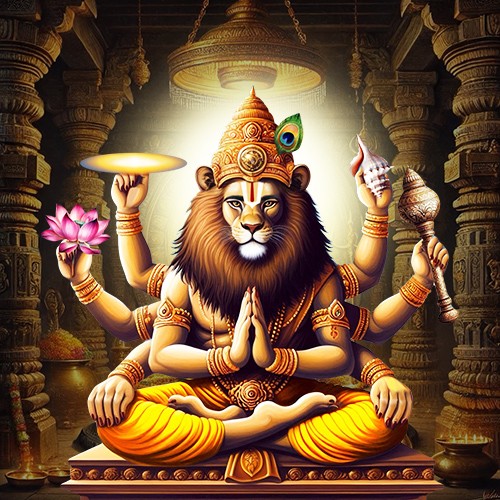
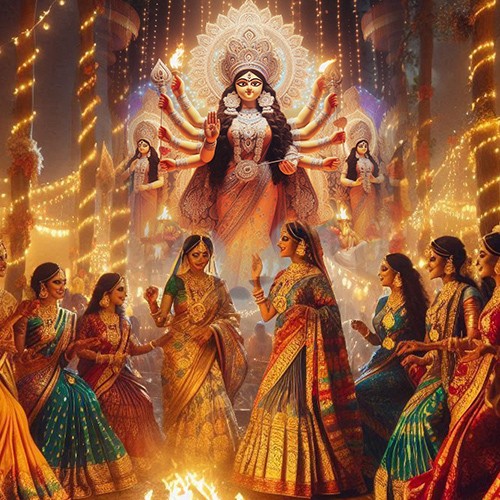
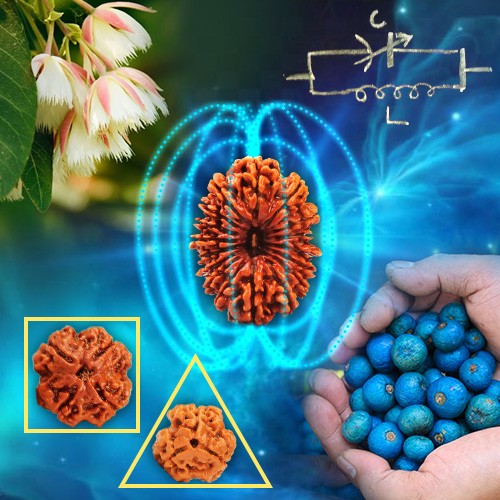


.jpg)

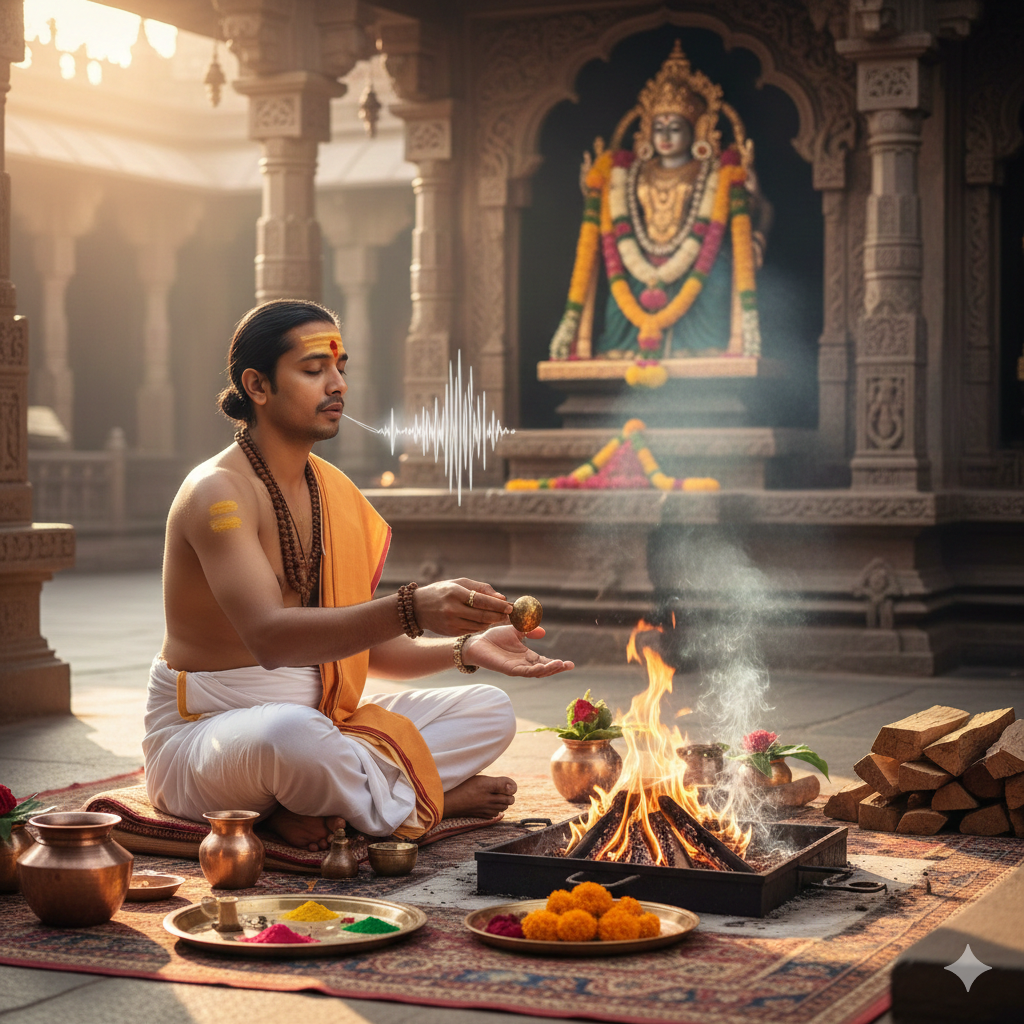
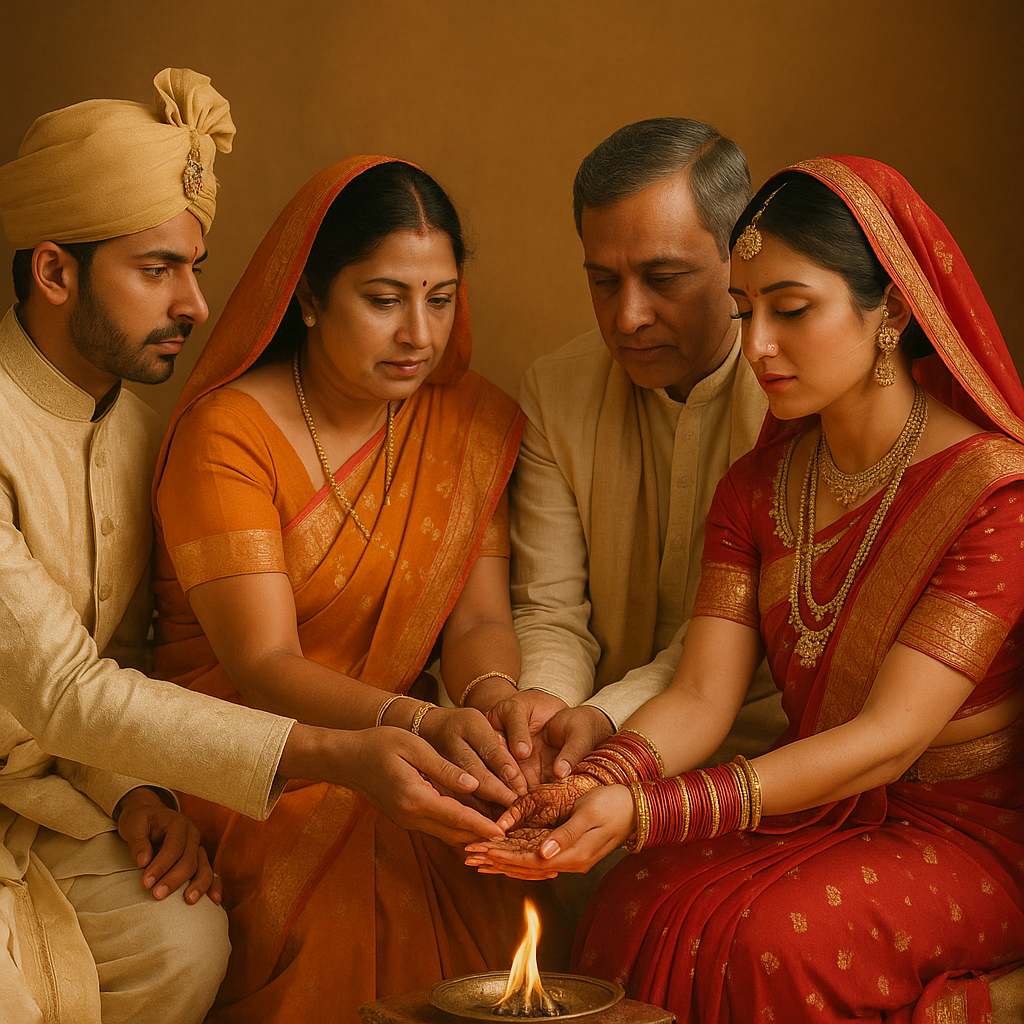
Pundalik
|March 27, 2024
Excellent information